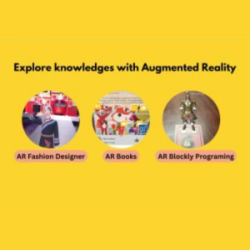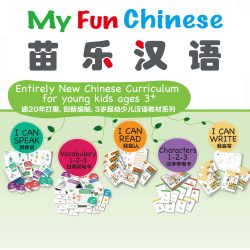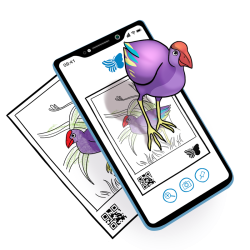Artificial intelligence (AI) is increasingly woven into students’ lives — from classroom tools and search engines to the platforms that shape their social worlds. For educators, this raises an urgent question: how can schools ensure students engage with AI responsibly and critically, rather than passively adopting whatever new tool appears next?
In a recent Harvard EdCast episode, Teaching Students to Think Critically About AI, education scholars Stephanie Smith Budhai (University of Delaware) and Marie Heath (Loyola University Maryland) discussed how to help young people navigate AI with awareness, equity, and purpose. Both are co-authors of Critical AI in K–12 Classrooms: A Practical Guide for Cultivating Justice and Joy (Harvard Education Press). Their work highlights how bias, values, and historical inequalities are often embedded within AI systems — and what educators can do to counteract them.
Key Takeaways:
- Acknowledge That AI Is Not Neutral: Budhai reminds educators that AI is “a piece of technology, not human, but also not neutral.” Its outputs reflect the assumptions, biases, and values of those who design and train it. Teachers can help students question who created a tool, what data it draws upon, and what purpose it serves.
- Move Beyond Excitement to Intentional Use: Educators are often quick to embrace new tools for their potential classroom benefits. Heath cautions that enthusiasm should be balanced with reflection. Schools should consider why and how AI is used, not simply adopt it because it is available. Intentional, critical use ensures technology serves learning goals rather than shaping them.
- Teach AI Literacy Through Inquiry and Reflection: Like media literacy, AI literacy begins with curiosity and questioning. Budhai and Heath suggest teaching students to audit technologies by asking who benefits, what trade-offs exist, and whose perspectives are represented. Such questioning cultivates deeper understanding and ethical awareness.
- Embed Equity and Culturally Responsive Pedagogy: Budhai stresses that AI must be examined through an equity lens. Educators can use culturally sustaining frameworks to ensure AI tools support, rather than disadvantage, diverse learners. For instance, Story AI — developed at UC Irvine — invites pupils to co-create stories with AI while examining how the technology portrays culture, identity, and representation. By revealing built-in biases (such as defaulting to certain appearances or settings), it helps learners discuss fairness, inclusion, and authorship in a tangible, age-appropriate way.
- Empower Students to Resist, Refuse, and Reclaim Technology: Not every digital tool deserves acceptance. Budhai and Heath encourage students to exercise agency — to question or even refuse technologies that misuse their data or reinforce inequality. “Refusing AI,” as they describe it, is part of cultivating democratic habits of choice and consent.
- Keep Students, Not Technology, at the Centre: Budhai concludes that educators should focus on the learner before the tool. Using the “SETT” model — Students, Environment, Tasks, Tools — teachers are reminded that technology should always come last. If AI genuinely enhances learning or accessibility, it can be adopted purposefully; if not, it is better left aside.

Helping students think critically about AI is not about teaching coding or keeping pace with technological change. It is about ensuring that young people understand the social and ethical dimensions of the technologies shaping their lives.
For educators, this means grounding classroom practice in intentionality, equity, and curiosity — asking not only what AI can do, but also what it should do, and for whom. When teachers and leaders model this kind of critical engagement, schools can become spaces where students learn to use AI wisely, ethically, and creatively.
For a deeper dive into the discussion, listen to the full Harvard EdCast episode: Teaching Students to Think Critically About AI.
Curriculum and Guides that may be of interest:
Get a special discount by quoting code AISLMALL during CHECKOUT.
3Education: StoryTellAR

StoryTellAR is an online and remote platform designed specifically to connect offline materials seamlessly with interactive digital content, using Computer Vision (Augmented Reality). With a user-friendly user interface, curators can use their mobile phone to associate audio recordings, videos and other digital interactions such as audio, AR video plane and URL to any artworks. The corresponding digital content customized by their very own creators will pop up, making the book seamless, personalized and effective.
AlGreen: E-book

AlGreen is at the forefront of developing microalgae technology for air purification and carbon capture, driving a sustainable future. AlGreen’s ebook introduces young learners to biology’s wonders and its role in sustainability. Covering cellular and plant biology, climate science, and future biotech like carbon capture and renewable energy, it inspires environmental stewardship and a passion for protecting our planet.
Beijing Mandarin: My Fun Chinese For PreK to Grade 4

Beijing Mandarin is a well-established Hong Kong-based Chinese language school renowned for its quality instructional publications and dedication to world-class Mandarin education since 1992. My Fun Chinese for PreK to Grade 4 was created to meet the needs of young Chinese language students. We drew on over 30 years of experience teaching the Chinese language to create and publish the My Fun Chinese learning resources.
NovaAcademy: Ready-to-Go Curriculum Sets

Novalearn Limited is an EdTech company transforming education by seamlessly integrating machine learning, studio-produced edutainment, and quality STEAM education aligned with international K-12 curricula. All the teaching resources you need for fun and enriching classes, created by the NovaLearn team of experienced educators and industry experts. Each curriculum set includes Project lesson plans, Engaging videos, Interactive activity sheets and Skill-building exercises.
Oxford University Press Cambridge IGCSE/O Level/AS & A Level Exam Success Revision Guides

Oxford University Press is a department of the University of Oxford. It furthers the University’s objective of excellence in research, scholarship, and education by publishing worldwide. Cambridge Exam Success Guides from Oxford University Press provide unique exam support and revision guidance for Cambridge IGCSE & O Level and AS & A Level students. Matched to the latest Cambridge assessment criteria. Perfect for use alongside Oxford Resources for Cambridge Student Books or as a standalone resource for independent revision.
QuiverVision: Quiver Augmented Reality Coloring

QuiverVision is a one-stop shop for Augmented Reality content and lesson plans for Pre-K to Year 8 and beyond. We develop the software behind the world’s best Augmented Reality Colouring Experiences. Our premier app, “Quiver”, makes learning fun. Enhance learning with Quiver’s AR subscription for 10-500 devices. Students bring educational coloring pages to life via the Quiver app, creating interactive, engaging experiences. Includes school/home access and curriculum-aligned plans, fostering creativity, skills, and knowledge retention.
Special Learning - Trainings, curriculum, materials and resources for educators

Special Learning is dedicated to changing the lives of people with Autism and other special needs. The organisation provides an exceptional suite of educational solutions for ABA practitioners, educators, and parents. Through its leading-edge technology platforms, users can access educational products and services around the world without geographical limitations.









